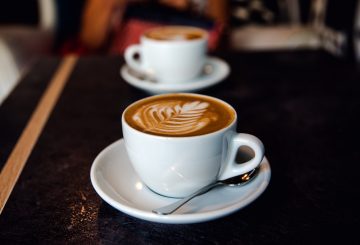生活方式:
怀卡托地区提供轻松、宁静的生活。农村宁静以及农田和灌木的景色正在使其越来越受欢迎的生活方式。
相比之下,汉密尔顿城充满活力和多样化。它拥有该国一些最壮观的花园、我们最大的水上中心之一、国际公认的动物园、世界级的体育和活动设施以及与怀卡托河相连的广泛人行道和自行车道网络。汉密尔顿机场周围有一个充满活力的航空社区,包括飞行员培训组织和航空维护。
这里有许多咖啡馆、酒吧和餐馆的热闹社交场景,城市举办了许多标志性活动,包括怀卡托气球和 Gallagher Great Race。在海岸,拉格伦是冲浪者的圣地,沿河钓鱼和划船也很受欢迎。
气候:
怀卡托地区温和温带,降雨量适中。汉密尔顿的每日最高温度在 1 月至 2 月的 22-26°C 以及 7 月和 8 月的 10-15°C 之间。
夏季气温偶尔会达到 28°C,而在晴朗的冬季早晨,温度可能会降至 −3°C。
低洼地区经常出现早雾。
新西兰人(猕猴桃)的生活方式:
虽然不可能完全捕捉猕猴桃的生活方式,但在这里你会发现一些特征。
新西兰人为了好玩而做的事情:
户外活动-去冲浪、玩沙滩足球或沙滩板球。新西兰人喜欢户外运动,无论是水上还是陆基运动。
在海中游泳-新西兰人与海边有真正的爱情,在炎热的日子里,海滩很受欢迎。记住什么时候在海滩上 “在旗帜之间游泳”,因为这是冲浪救生员巡逻的安全区。
留在巴赫-Bach 是一个备受欢迎的猕猴桃机构。传统上,巴赫是一个小而简单的夏季度假屋(有时是 DIY/ 可疑的建筑!),通常在海滩或湖边。现在,尽管有些海滩相当大、现代且豪华。
在咖啡厅闲逛-品尝一杯咖啡,真正的猕猴桃风格!无论出于什么奇怪的原因,新西兰已经成为了优质咖啡的天堂,许多在欧洲的 OE(海外经验)的新西兰人迫不及待地想回到家里喝咖啡!尝试一杯短黑(浓缩咖啡)、长黑色(含相等量热水的浓缩咖啡)、扁白色(含蒸牛奶的浓缩咖啡,比拿铁强)或一碗拿铁(一种巨大的乳白咖啡在一个非常大的圆形杯中供应)。
赶上橄榄球比赛 —— 新西兰人喜欢他们的国家体育运动,橄榄球。在看到全黑人(国家橄榄球队)比赛之前,你不是猕猴桃,这是一个常见的笑话。
观看当地乐队现场演奏 —— 在当地音乐方面,新西兰人非常爱国。每周五和周六晚上,无论你在新西兰的哪里,最有可能会有一个当地乐队在城里演奏某人。
猕猴桃烧烤 —— 混合了三件新西兰人最喜欢的东西:吃饭、在外面度过时间和喝啤酒,猕猴桃烧烤是新西兰的典型体验。
猕猴桃穿的东西
新西兰人不会自称是世界上最具时尚意识的人,但他们非常实用。
猕猴桃设计师-从 Trelise Cooper 和凯特·西尔维斯特到唐娜 Tulloch 和 Tanya Carlson-穿着当地设计师的线索。
所有黑人装备-由于黑色与所有东西一起使用,所有黑色球衣(和任何一切都是黑人)总是很好的外观。
Gum靴子和黑色单身人士 —— 虽然比以前不那么受欢迎,但在新西兰农村地区旅行时,仍然普遍看到人们穿着最实用的户外服装:橡胶靴和黑色单身鞋。
Jandals — 猕猴桃的爱让他们的脚获得新鲜空气。Jandals 是夏季最受欢迎的鞋类选择之一。对于那些觉得 Jandals 过于限制的人来说,许多猕猴桃赤脚走动。
猕猴桃食品和饮料
每个国家都有代表自己国家的象征性食物,新西兰绝不是什么不同!从海鲜到巴甫洛娃的甜点和当地酿造的啤酒,以下是每周猕猴桃购物清单上的一些主要成分清单…
鱼 “n” 薯条-在沙滩上吃外卖鱼 “n” 薯条,别忘了 Wattie 的番茄酱!
巧克力鱼-这种受欢迎的猕猴桃甜点经常与咖啡一起供应。这是一个鱼形的巧克力覆盖棉花糖!
吃一个馅饼-一开始就是轻松吃饭的东西已演变成全国性的痴迷。每年从加油站和咖啡馆出售成千上万的馅料,可以从美味的鸡肉和蔓越莓到基本牛肉末和猕猴桃经典、培根和鸡蛋。真正的猕猴桃烹饪传统!
Hokey pokey 冰淇淋-新西兰最喜欢的冰淇淋风味,香草加上少量脆脆的太妃糖。
去哈吉-哈吉或 “土炉” 是毛利人最著名的传统烹饪方式。在地上挖了一个洞,食物(从土豆到猪肉的任何东西)放在编织篮子里,并与热岩一起埋在一起,以便食物在自己的蒸汽中慢慢煮熟。
Pavlova-一种传统的新西兰甜点 —— 一种酥皮,外面清脆,中间柔软,覆盖奶油并装饰水果。
小龙虾-著名的是从凯库拉的路边摊位购买的,但在新西兰各地销售。
Speight、Monteith & TUI-经典猕猴桃啤酒和拉格啤酒,全年都喜欢。
蜂蜜-新西兰有许多品种的蜂蜜,但最受欢迎的是麦卢卡蜂蜜,该蜂蜜是由以健康益处而闻名的本地开花灌木制成的。
国王鲑鱼-不论是新鲜的还是熏制的,鲑鱼在马尔堡峡湾、斯图尔特岛和南岛东海岸养殖。
猕猴桃-也被称为中国醋栗,猕猴桃是多汁的绿肉水果,毛茸茸的棕色皮肤在该国温暖的地区茁壮成长。
柠檬和帕罗亚(L&P)-来自帕罗亚小镇的柠檬汁和碳酸矿泉水的组合。L&P 广告活动给了我们现在公认的 “新西兰世界著名” 概念(L&P 本身就是这个概念的缩影)。
Kumara-一种传统的毛利食物作物,kumara(也称为红薯)是一种美味的猕猴桃最爱,可以用作薯片、烤或捣碎。
棒棒糖-被称为海外糖果和/或糖果,猕猴桃耐嚼棒糖通常以当地乳品厂的一美元和两美元的袋子出售。我们也是一个沉迷棒棒糖蛋糕的国家,这是一种由棒棒糖、碎麦芽饼干、炼乳、椰子和融化的黄油制成的光荣沙漠/切片/原木的东西。(相信我们,太棒了。)
绿唇贻贝-在当地海岸周围捕获,这些大型贻贝被包裹在一个美丽的绿色外壳中。经常用一大块楔子的面包一起服务。
菠萝肿块-巧克力覆盖菠萝咀嚼。
Weetbix-新西兰人最喜欢的早餐麦片。类似于美国品牌 Weetabix。
Marmite-被警告!有些人喜欢它,有些人讨厌它。Marmite 是一种基于酵母的传播。
WhiteBait-被认为是美味佳肴的小小小鱼。经常作为油条煮熟,用面糊炸。
Paua 馅饼-Paua(贝类)具有非常独特的味道,可以在肉饼中吃掉。
虚张声势牡蛎-来自新西兰大陆最南端的城镇布拉夫。
Anzac 饼干-在所有好的咖啡馆和超市中找到。
42 以下-伏特加获奖的新西兰伏特加酒,有各种口味可供选择。
Zealong Tea — 随着新西兰人越来越意识健康,他们正在饮用更多的绿茶。Zealong 是新西兰唯一的绿茶庄园。这种茶真正走向国际化,世界领导人和皇室正在服务。
要购买的猕猴桃礼物
许多海外旅客喜欢带回一些纪念品来记住我们的冒险之旅。无论是家里的物品,还是送给朋友或亲人的礼物,这里都有一份在回家之前要装在行李箱里的奇异果物品清单。
A Buzzy Bee-一只蓝色、红色和黄色的拉轮上的木质蜜蜂,在新西兰几乎所有家庭中都发现。经典的猕猴桃玩具。
美利奴羊毛-大多数纪念品商店出售美利奴羊毛,新西兰人为了在寒冷的冬季保暖而穿的美利奴羊毛。Icebreaker 品牌因其 100% 的天然透气品质而成为新西兰人的最爱。
Rumi & 木工艺品-在当地市场和纪念品商店找到的一种受欢迎的天然工艺品。
Greenstone-(毛利人名称 ‘Pounamu’)来自新西兰,这种绿玉通常被许多新西兰人戴在脖子上,以不同的符号。它可以作为珠宝购买,也可以在许多纪念品商店购买。
Possum 毛皮-混合美利奴羊毛和 possum 毛皮制成柔软可穿戴的帽子、手套和许多其他配饰,是当地的时尚专业。
陶瓷和雕塑-新西兰拥有许多才华横溢的工匠,他们生产陶瓷、木材、玻璃和金属等精美作品。
美食-探索新西兰的美食商店,购买本土葡萄酒、橄榄油和鳄梨油、巧克力和蒸馏利口酒。
原创艺术-对于真正的一片真正的 Aotearoa,购买新西兰原创绘画或限量版印刷品。
罗托鲁瓦泥带一些当地的泥浆回家,用一些新西兰最好的天然矿物质沉迷你的皮肤。
猕猴桃梦
与许多其他国家相比,新西兰人的物质思想并不特别。
一般来说,新西兰人不喜欢穿昂贵的品牌,特别是驾驶豪华车或炫耀他们的财富来 “炫耀”。事实上,普通的猕猴桃对那些炫耀和吹嘘自己的成功的人不信任。
三个 Bs —— 船、Batch(度假屋)和宝马。一旦猕猴桃达到这个财富水平,就是退休和享受它们的时候了。
季度英亩区 — 新西兰人不习惯公寓生活,虽然公寓正在我们的主要城市建造,但大多数居民都是非新西兰人。新西兰人渴望在四分之一英亩的土地上拥有房子(约 1011 平方米)。
作为自己的老板 — 许多新西兰人希望有一天拥有自己的企业,这不是因为他们希望赚大量钱,而是因为他们可以选择自己的工作/生活平衡。不幸的是,许多新西兰人在没有适当规划的情况下进入自营职业 ——(前三年五分之四的企业失败了)


















































